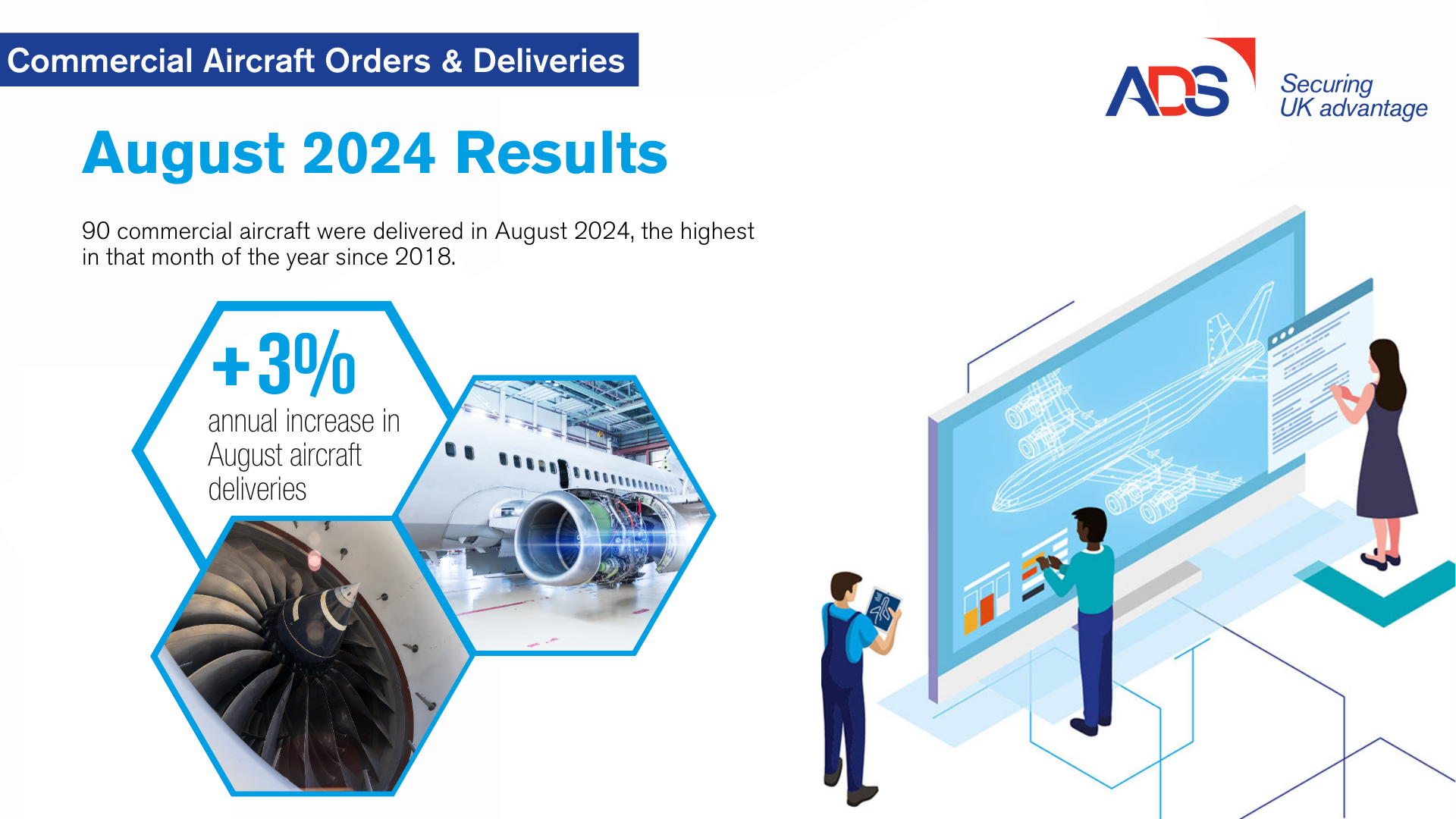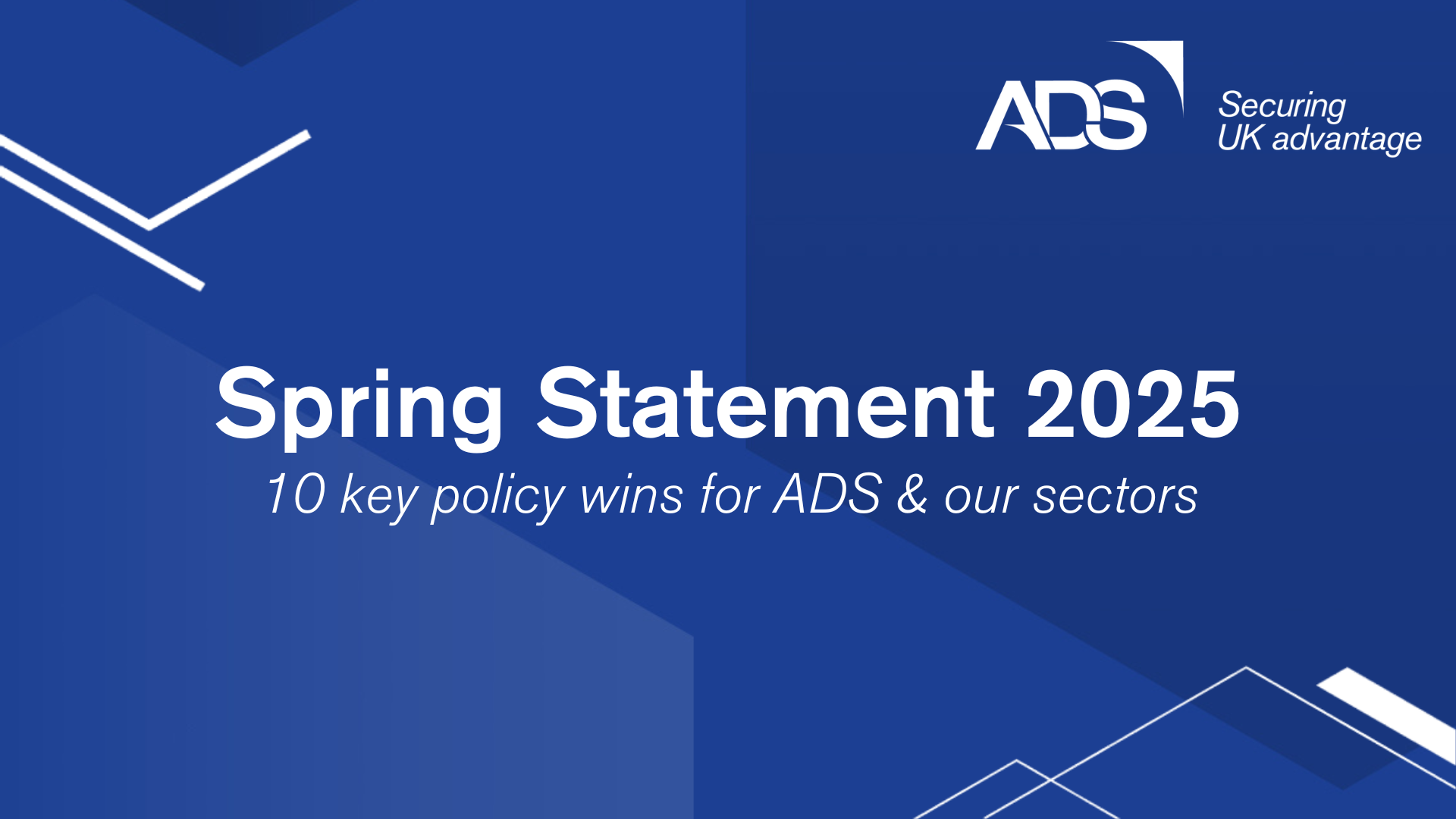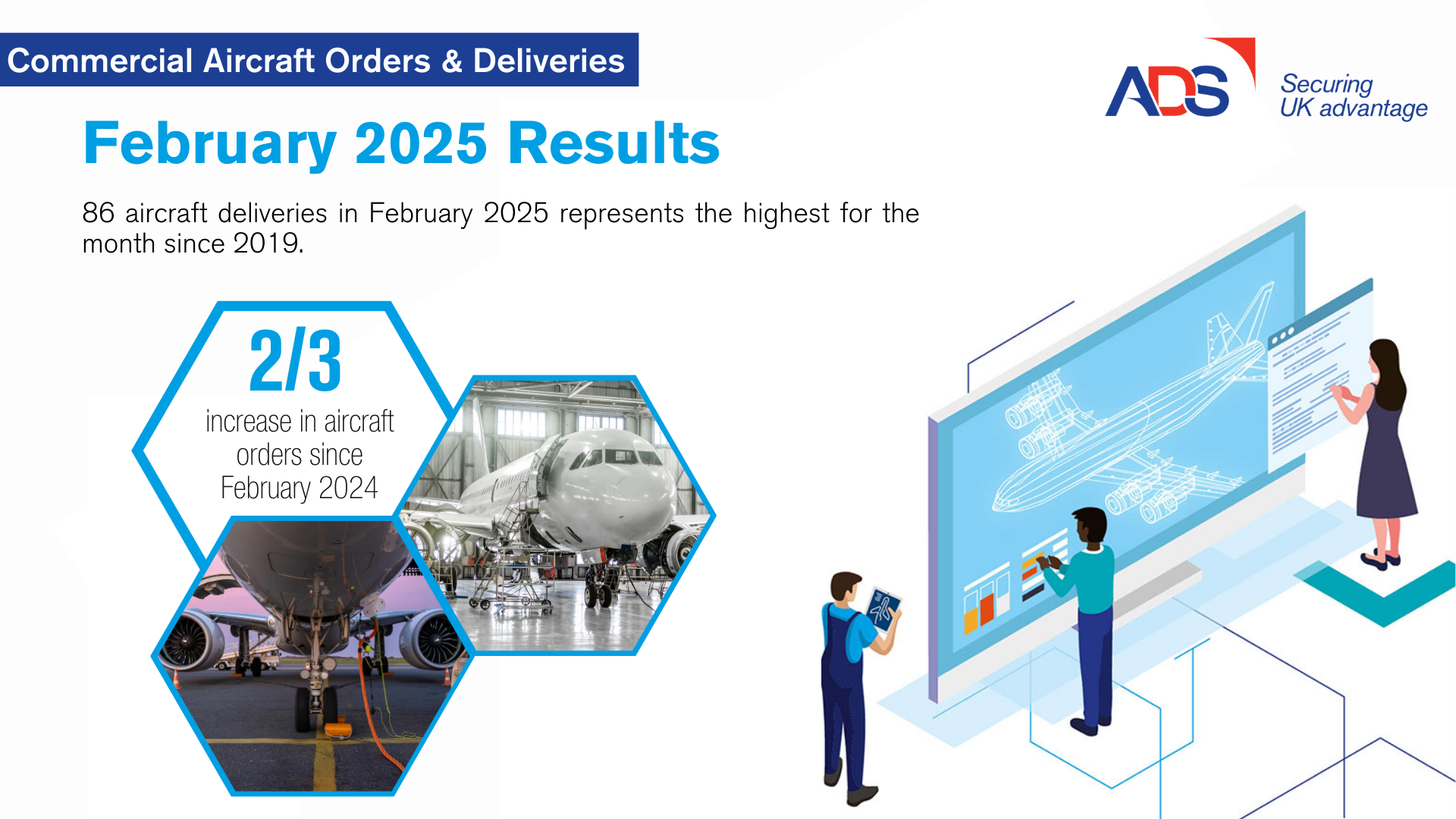
- 90 commercial aircraft were delivered in August 2024, the highest in that month of the year since 2018
- Year-to-date aircraft orders are two thirds behind 2023 levels
- The 15,651 aircraft backlog remains equivalent to more than 10 years’ worth of work and £244bn to the UK
The number of commercial aircraft delivered in August 2024 was higher than in any August since 2018 according to ADS, the trade association for the UK’s aerospace, defence, security and space sectors.
ADS figures highlight the fourth consecutive August of improved aircraft deliveries, with 90 aircraft delivered. Despite a 3% growth in August aircraft deliveries, challenges in the supply chain mean that 2024 delivery rates are lagging 9% behind 2023 figures.
Aircraft orders placed in 2024 to date are two thirds behind 2023 figures
ADS figures highlight that the 68 aircraft ordered in August 2024 is 58% lower than the same month in 2023.
Year-to-date, 682 aircraft have been ordered, 65% less than at the same point in 2023.
The number of aircraft currently on backlog order is 8% higher than it was 12 months ago at 15,651. ADS estimates that production of these aircraft is worth £244bn to the UK and represents over a decade’s worth of work.
Aimie Stone, Chief Economist at ADS Group commented:
“The aerospace sector’s continuing rate ramp up is reflected in this month’s increased aircraft deliveries. Despite this success, the industrial capacity of the sector continues to be limited by challenges in the supply chain and regulatory uncertainty.
“We now need to see the UK Government deliver on its promise for a comprehensive industrial strategy, formed in partnership with a range of stakeholders that includes industry, to ensure the aerospace sector’s full potential can be realised.”
ADS recently released its 2024 Aerospace Sector Outlook, showcasing the sector’s value add of £10.9 billion to the UK economy, an increase of 16% compared to 2013 figures. The figures highlight 104,000 direct jobs in the aerospace sector, with a median salary of £48.7k – 39% higher than UK average, with the vast majority (88 percent) located outside of London and the Southeast.





